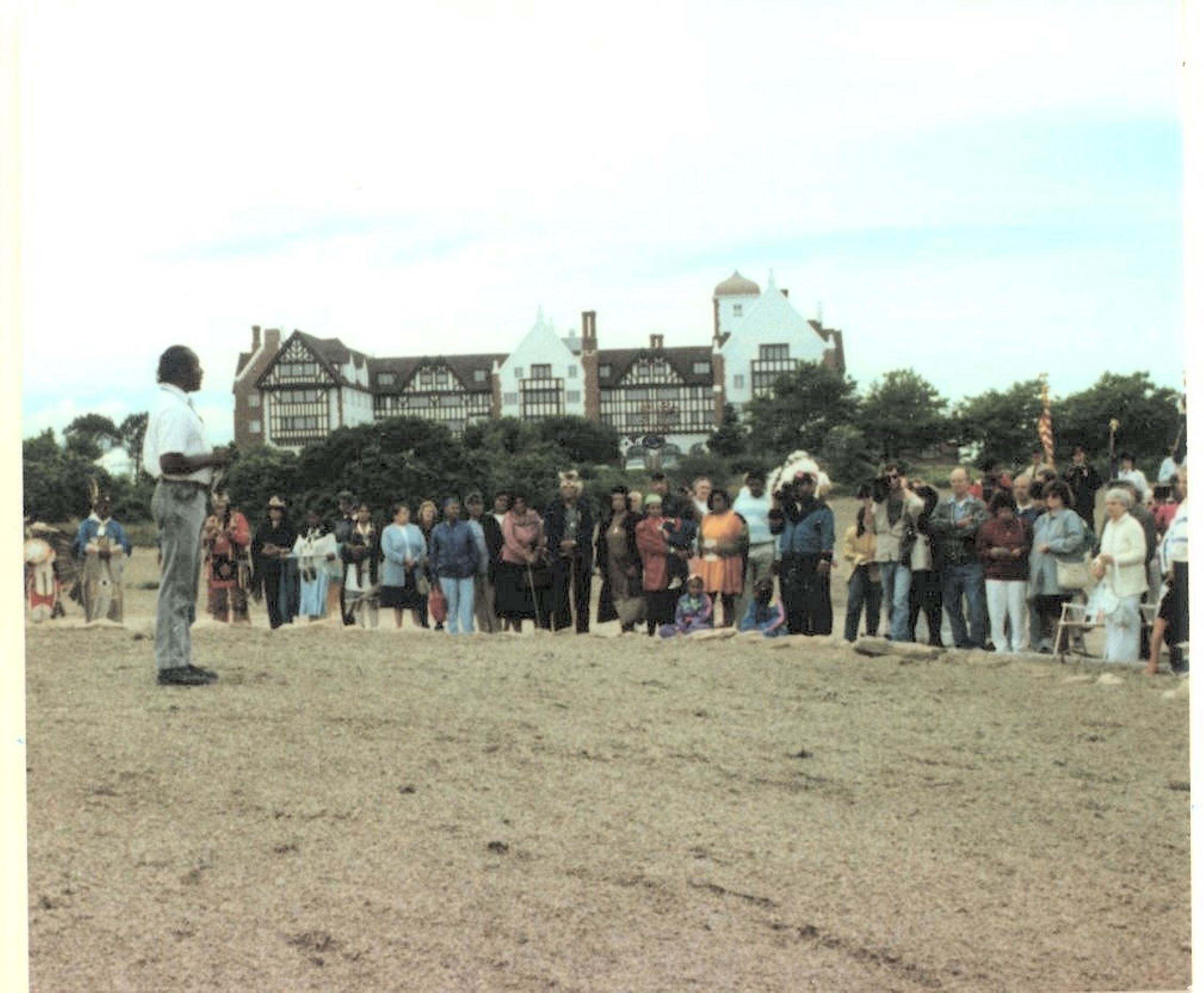
Fort Hill Cemetery, with its sweeping views of land and water, was officially dedicated 31 years ago on June 23. East Hampton Town had purchased the 30-acre property in the 1980s to preserve a sacred Montaukett burial ground and to create a cemetery for latter-day Montauk residents.
The “fort” in Fort Hill is said to have come from a Montaukett Indian fort – really, a stockade enclosure to protect women and children — that stood on the hill in the 17th century. Nearby Massacre Valley is named for an attack in 1653 by the Narragansetts, who killed a slew of Montauk warriors and kidnapped the daughter of Wyandanch on her wedding day after murdering her bridegroom.
In addition to the souls of most likely more than 100 Montauketts, perhaps including Wyandanch himself, Rough Riders who died of yellow fever after the Spanish-American War also were buried at Fort Hill (they were later re-interred elsewhere). Montauk locals have said that some Montaukett graves were desecrated by development at the Montauk Manor in the first half of the 20th century. In the 1980s, the burials at Fort Hill were reportedly covered by blackberry vines; town officials hid their precise location to prevent thieves from pilfering artifacts.
In 1983, excavators had started to chew up the earth at Fort Hill to develop home lots when Robert Cooper, a descendant of the Montauketts, Richard Whalen, an amateur archeologist, the Concerned Citizens of Montauk, and other members of the public sounded an alarm. A huge political firestorm ensued, with protests, court battles, even an investigation into the would-be developers by the county district attorney’s office.
After the town purchased the property through condemnation, Cooper headed the town’s Fort Hill Cemetery advisory board as it finalized plans for laying out plots and offering them for sale. Native American burial mounds were to be incorporated into the cemetery, which was to feature flat headstones rather than upright ones, both to respect Native American burial customs and preserve the terrain of an open field.
Council Rock, which used to rest at the foot of Fort Hill near the Montauk Playhouse, was moved up to the cemetery. The white quartz boulder had been a center of tribal activity, the site of meetings that included representatives of all 13 Long Island tribes.
The cemetery’s lofty perch on Fort Hill was spiritually significant, Cooper was quoted as saying in the East Hampton Star at the time – “open to the four winds, the setting and rising suns, and high above the sea.
“It is absolutely suited for what it has been and will be used for,” he said.

Reply or Comment